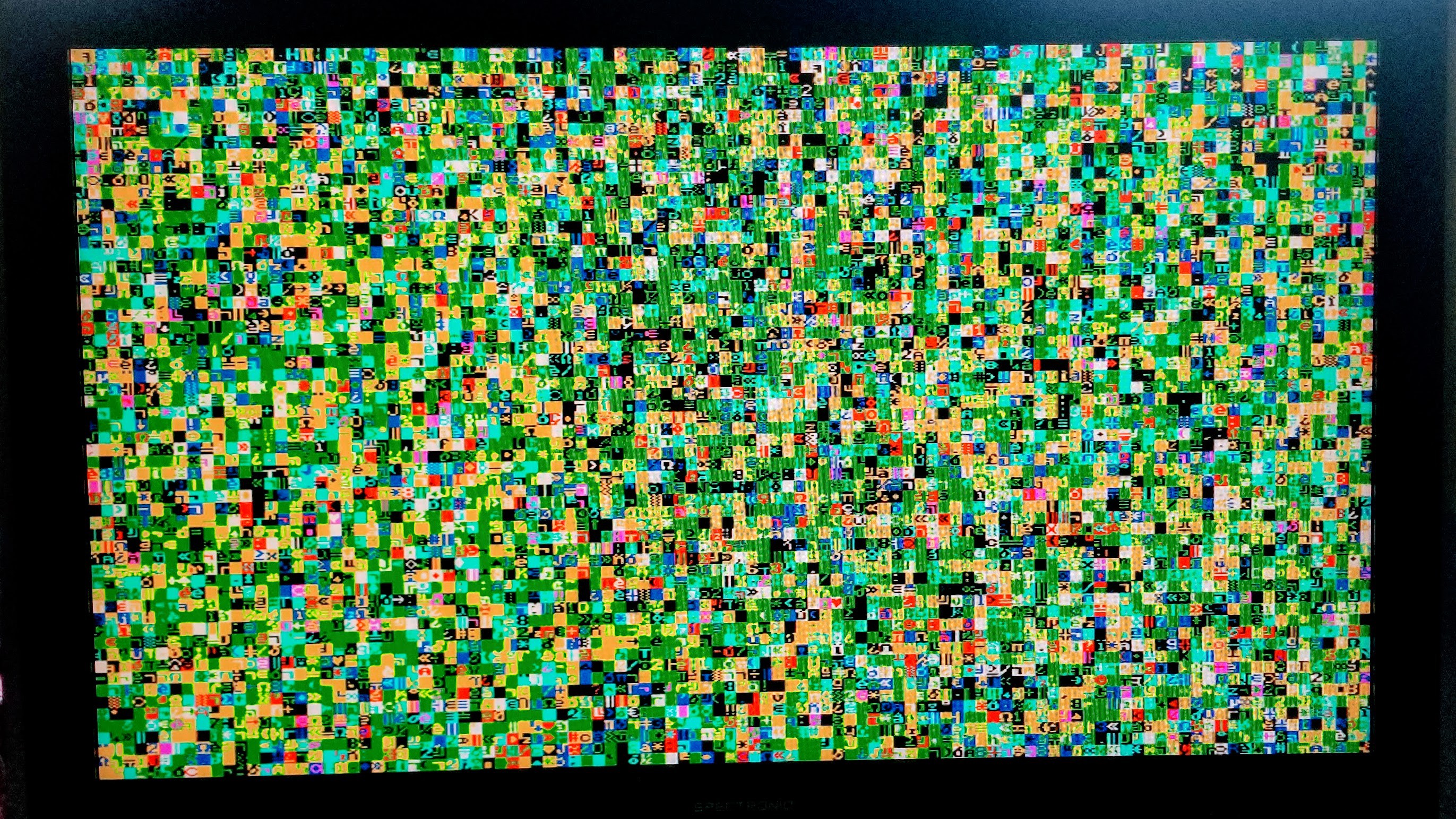There was a completed version of the video system running a few months ago. Pretty much everything changed during the main software development and that also included the video modes. One change was to add the classic 60Hz VGA mode and allow even the ancient plasma TV rescued last year to understand the video timing.

The image above shows the old TV displaying 104x60 of random text. This 104 column text is due to the dot clock being 33MHz, or 30% faster that the standard 25MHz VGA clock. This results in an additional 24 characters of text being output per line.
So how is the classic VGA timing done?
The original video modes used a process cycle of 4 lines of 5 virtual machine cycles. The virtual machine runs at 192kHz, so the horizontal frequency is 38.4kHz and close enough to support 75Hz VGA and 60Hz SVGA modes.
The process cycle can be reconfigured to 5 lines of 4 virtual machine cycles. This results in the same block of 20 cycles and the serial compatible process cycle frequency of 9.6kHz. The horizontal frequency is now 48kHz and close enough to support 768-line video modes such as XGA.
The new 60Hz VGA mode uses a configuration of 3 lines of 6 virtual machine cycles. There are some issues with this though. The process block is now 18 cycles and the process cycle frequency does not support a standard UART frequency, so not serial support. The horizontal frequency is also little high at 32kHz, but this can be fixed by adding a short delay to each line.
The 60Hz VGA timing is determined by reseting the horizontal line every 262 cycles. The 6 virtual machine cycles add up to 258 (6 x 43), so an additional delay page is added before the horizontal sync page. The delay burns an additional 4 cycles to result in a horizontal frequency of 31.48855kHz (8.25MHz / 262). This is very close to the exact VGA horizontal frequency of 31.46875kHz.
The frame is made up of 175 process cycles consisting of 3 lines each. This results in the exact 525 lines of the standard VGA mode and a vertical frequency of 59.98Hz. Again, this is very close to the VGA/NTSC standard of 59.94Hz.
 Alastair Hewitt
Alastair Hewitt
Discussions
Become a Hackaday.io Member
Create an account to leave a comment. Already have an account? Log In.